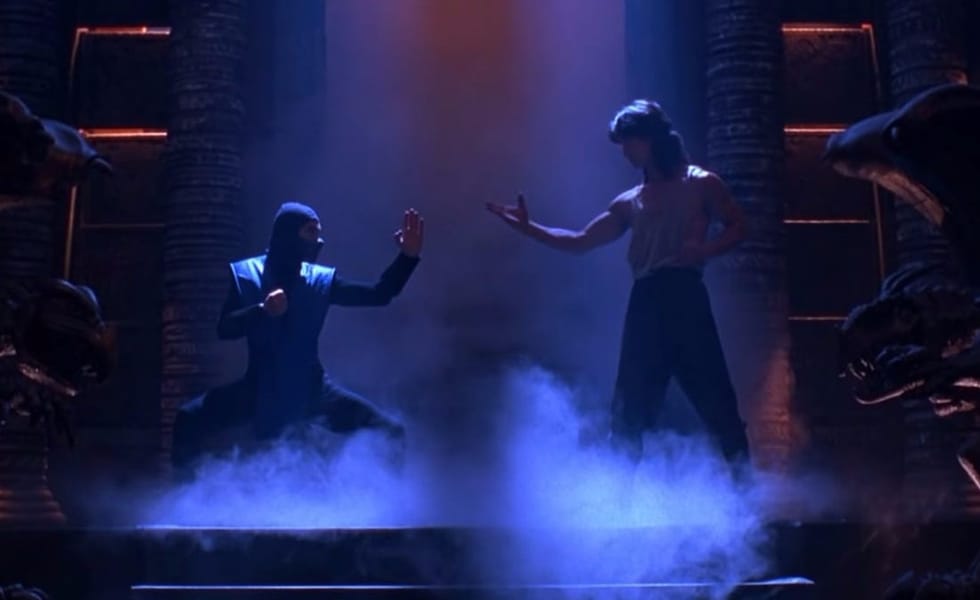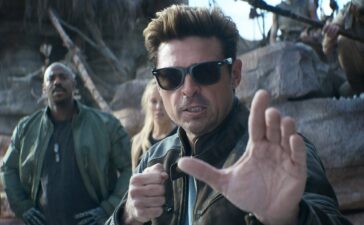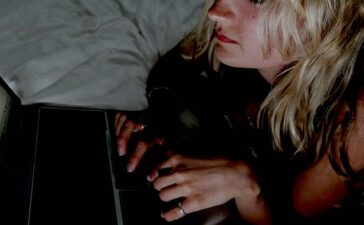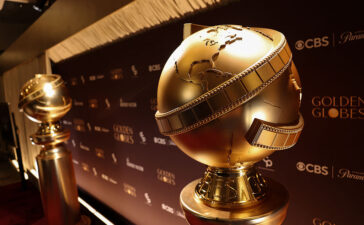When Midway Games tasked Ed Boon and John Tobias with developing a combat game to revival Street Fighter II: The World Warrior, neither of them could have imagined the impact that their creation would have.
Writing a unique story using digitised human characters with gameplay influenced by Asian martial arts films, Mortal Kombat became a smash hit upon its release in 1992. Almost three decades on and the iconic fighting title remains one of the longest-running and most successful franchises in video game history, spawning over 20 titles, a collection of books and comics and a 1995 film adaptation that brought its behind the scenes narrative full circle and proved video games could transfer to the big screen.
At the time of its release, the few video games given the movie treatment had been box office bombs. The first, 1993’s Super Mario Bros., was an unmitigated disaster and currently holds a rating of 23% on Rotten Tomatoes. Then there’s the almost unwatchable Double Dragon and disappointing Van Damme headlining failure Street Fighter. Despite plenty of material to work with, studios couldn’t find the right formula for success until Threshold Entertainment entered the picture. The small independent company believed they could do what the big dogs couldn’t and shoot a live-action video game adaptation that would not only stay true to the ethos of the game, but also be a hit with moviegoers.
Kevin Droney, who had that point had only written for television, specifically, the Highlander series, was tapped to write the screenplay, with the relatively unknown Paul W. Anderson (who would go on to direct the Resident Evil franchise and cult classic Event Horizon) given the nod as director. Anderson was chosen for his work on his debut feature, Shopping, where he displayed a visual flair despite the film’s low budget. Having never filmed using special effects or choreographed martial arts scenes, Anderson knew he was under the pump from the get-go and dedicated his free time to reading every book he could about filmmaking to prepare himself for what was to come.
Loosely based on the original Mortal Kombat game and incorporating elements of its sequel, the film followed earth warriors Liu Kang (Robin Shou), Johnny Cage (Linden Ashby) and Sonya Blade (Bridgette Wilson) as they take part in sorcerer Shang Tsung’s (Cary-Hiroyuki Tagawa) ancient fighting tournament. While the cast might not be full of household names (veteran Tagawa and the always-entertaining Christopher Lambert as the Thunder God Raiden are the most notable actors), things could’ve been much different if producers got their way. Cameron Diaz was originally cast as Sonya Blade until a wrist injury forced her to drop out, while 80s action stars Steve James and Brandon Lee were the first choice for the roles of Jax and Johnny Cage respectively until both tragically died before shooting. Other names bandied about included Tom Cruise and Johnny Deep, but despite missing out on these big fish, the use of lesser-known actors such as Shou and Wilson helped give the film a feeling of authenticity. Anderson didn’t rely on star power, instead hiring a group of young, hungry up and comers who committed to a wild project about a centuries-old martial tournament controlled by soul-stealing sorcery. He understood that adhering to the source material was more important than securing a big name actor.
Making sure to focus on the main rivalries from the game (Sonya Blade and Kano, Liu Kang and Shang Tsung) and to provide each character with a solid background story, Anderson was able to give audiences a familiar starting point as well as to expand on the mythology already established within the games. Taking elements from both Mortal Kombat and Mortal Kombat II allowed Anderson room to explore Outworld and introduce secondary characters, such as the steel fan wielding favourite Kitana.
Despite appealing to fans with a solid story and fleshed out character narratives, Anderson’s first cut didn’t go down well with test audiences who bemoaned the lack of fight scenes. For a film based on a game about fighting, you’d think this wouldn’t be a problem, but it seems as if Anderson fell into the trap of previous video game adaptations where more emphasis was put on a convoluted plot (Street Fighter anyone?) than the action. Anderson realised he had to up the ante and re-shoot several fight scenes if the film was to work. With help from Shou, who along with playing Kang was an accomplished martial artist and stunt performer, the two went back and filmed a slew of extra scenes. Anderson’s decision to fill the 101-minute runtime with as many action spots proved to be a large reason for the film’s success.
The fight scenes might not be on par with John Wick, but for an American action film made in the ’90s, Mortal Kombat delivers on all fronts. You get to see Sonya Blade get her revenge on criminal mastermind Kano, Liu Kang take care of Sub-Zero and Johnny Cage tackling the six-armed monster Goro. Anderson made sure to include many of the characters’ special moves, with fans ecstatic at seeing Liu Kang performing his bicycle kick, Scorpion shooting his Kunai from his hand and Sub-Zero using his ice powers. Sure, the special effects are dated when you watch now, especially the rubber Goro, but considering the $18 million budget Anderson had, he and his team did a tremendous job. The design team paid great detail to the scene’s backgrounds, crafting locations reminiscent of levels in the game. The actors chosen also resemble their in-game characters, with Sub-Zero and Scorpion wearing their classic ninja outfits in their respective colours and Tagawa a dead ringer for the soul-collecting Shang Tsung. It’s these little details that made Mortal Kombat translate so well on the big screen.
Along with fulfilling the action quota needed for a ’90s film, Mortal Kombat has a kick-ass soundtrack that stands the test of time. Composer George S. Clinton teamed with famed guitarist Buckethead to create a techno-fuelled nightmare that was similar to the music heard when playing the game. Along with the traditional score from Clinton, an industrial heavy soundtrack featuring the likes of Fear Factory, Type O Negative and Napalm Death was also released to much fanfare. This compilation contained the game and film’s iconic techno theme, ‘Techno Syndrome (Mortal Kombat),’ from Belgium industrial act The Immortals. The soundtrack made history as the first electronic dance music (EDM) record to receive a platinum plaque and would be a huge influence on the music used in many other video game to film adaptations.
While the fight scenes, acting and soundtrack all make Mortal Kombat great, the reason it resonates with audiences just as much today as when it was released 25 years ago is due to the pure joy it brings while watching. A video game about an ancient fighting competition involving humans with special powers doesn’t exactly lend itself to reality, but films, like games, are often a way to escape from the daily grind of everyday life. Sometimes you just want to see someone do the splits and punch a seven-foot mutant in the balls, something Mortal Kombat offers. Anderson and his crew embraced the B-grade aesthetic of ’80s martial arts epics to deliver a good old fashioned romp that ticks all the boxes.
While it isn’t without its flaws – the dialogue is cheesy and the special effects dated – Mortal Kombat captures the essence of what made the video game a winner. Anderson appealed to his target audience with an enjoyable martial arts flick with the right amount of action and laughs to keep gamers happy. With a serious reboot of the original set to hit cinemas next year, it will be interesting to see what producer James Wan (Saw series) can bring to the table. Until then, grab some popcorn, crack open a cold one, give the 1995 version of Mortal Kombat a re-watch and enjoy the first successful video game adaption ever released.







